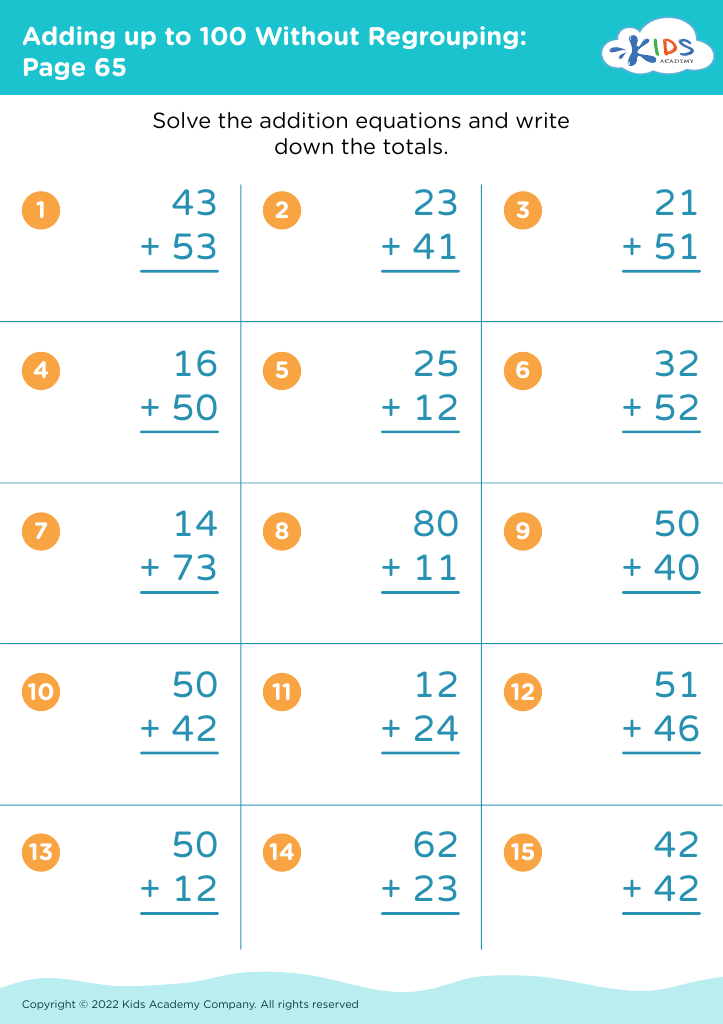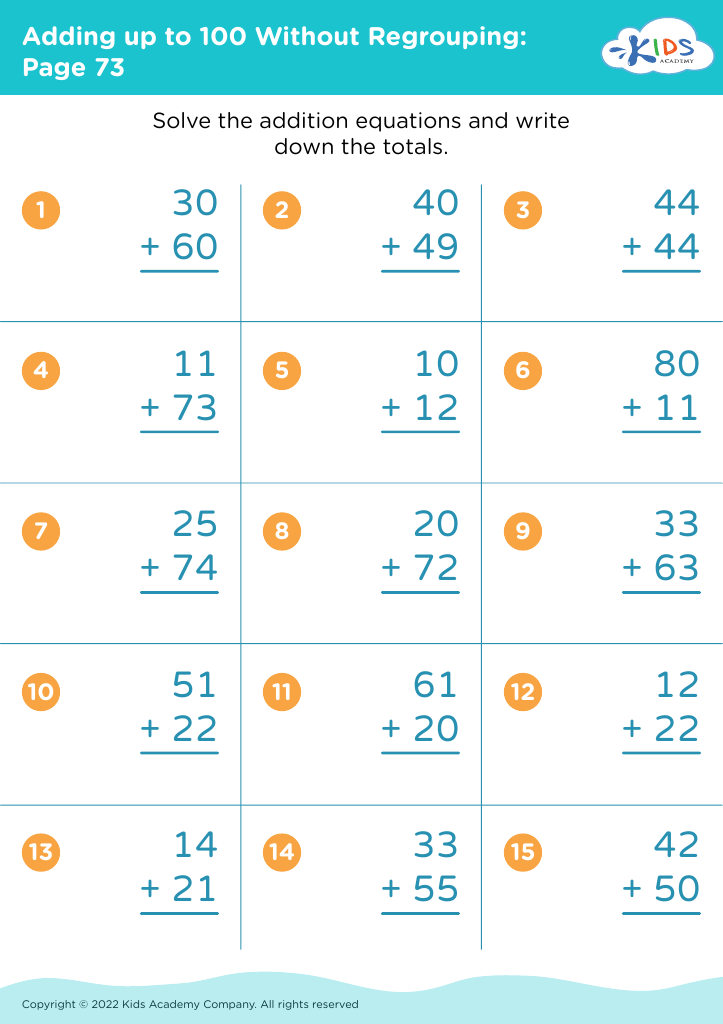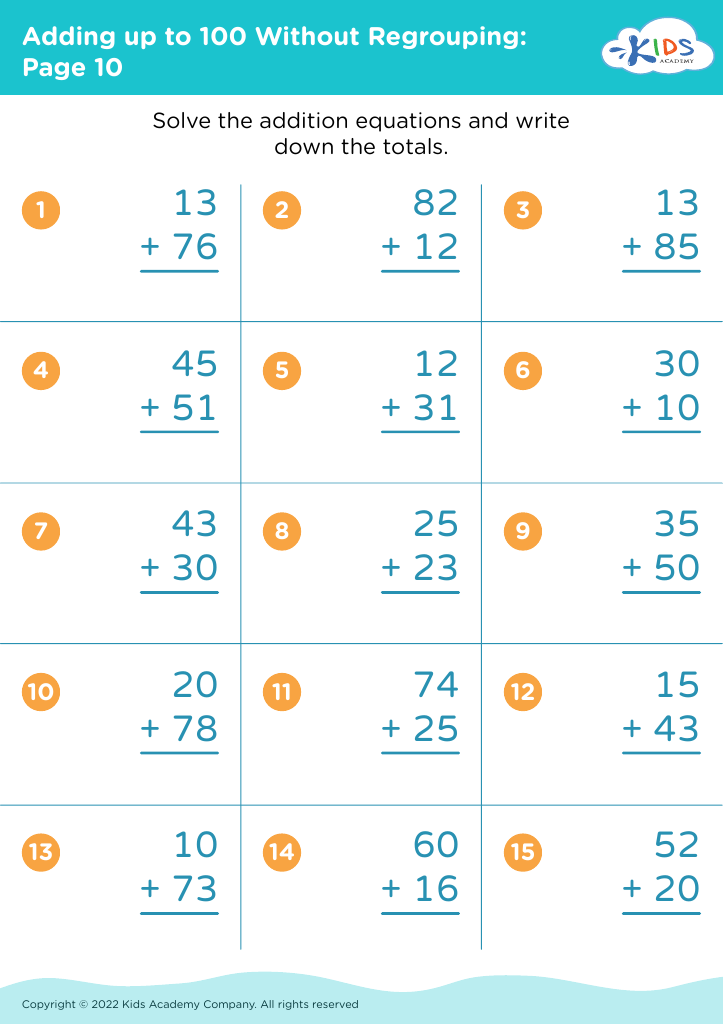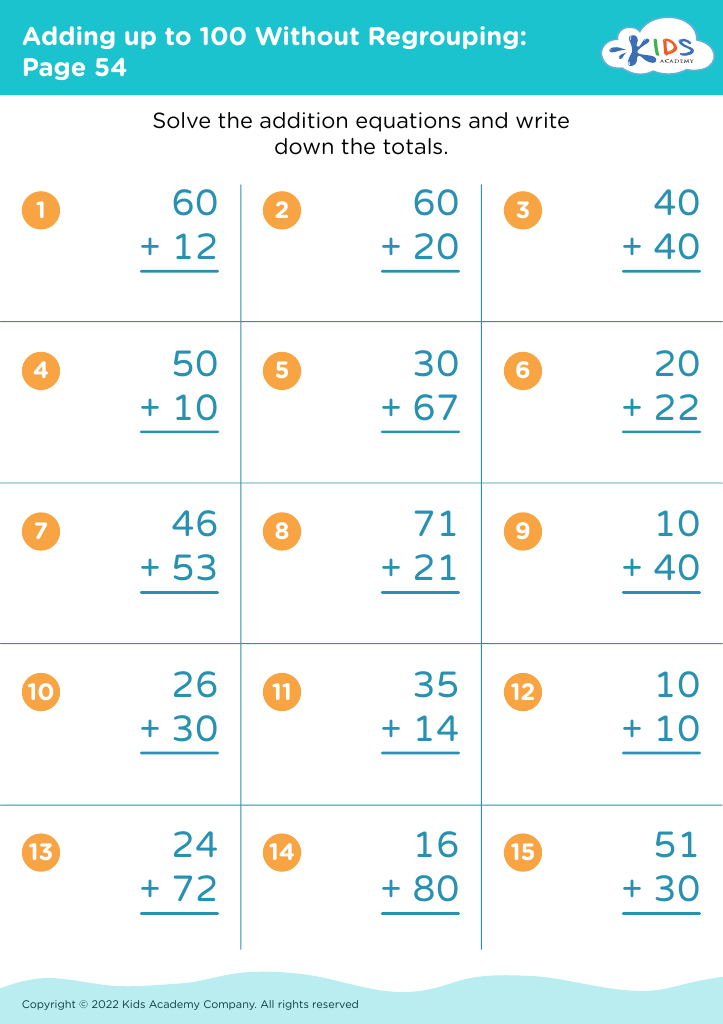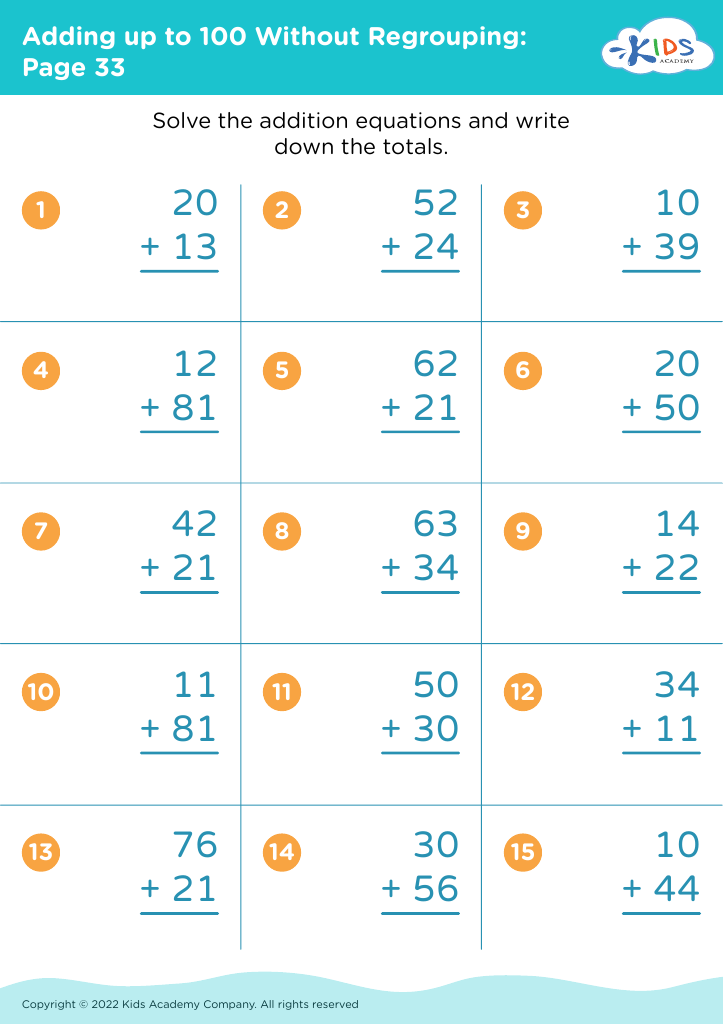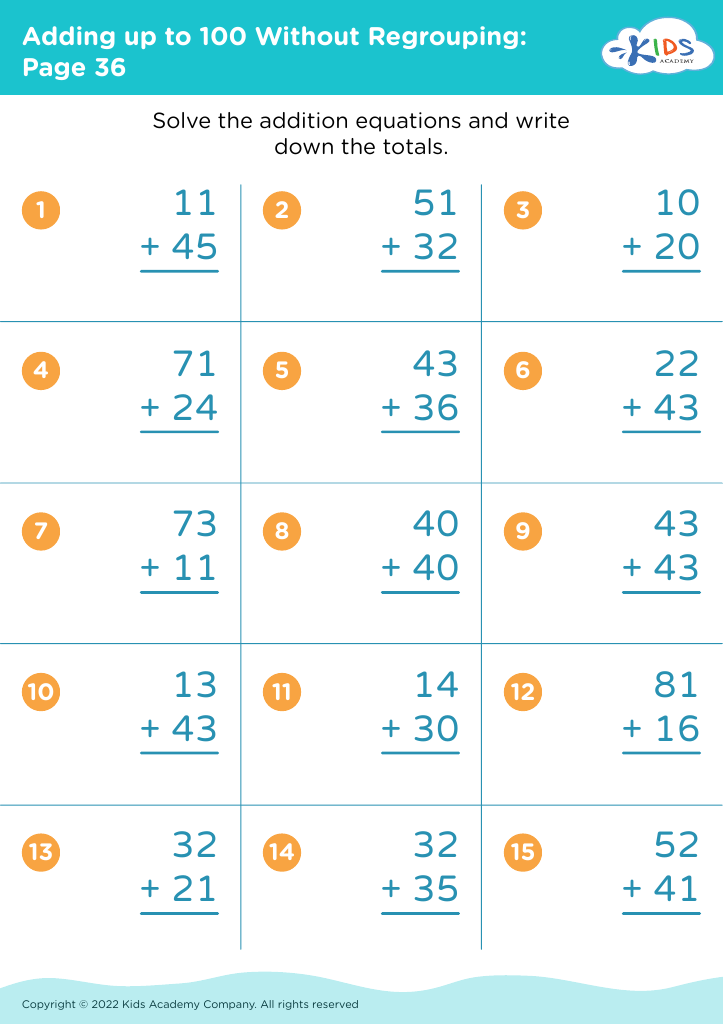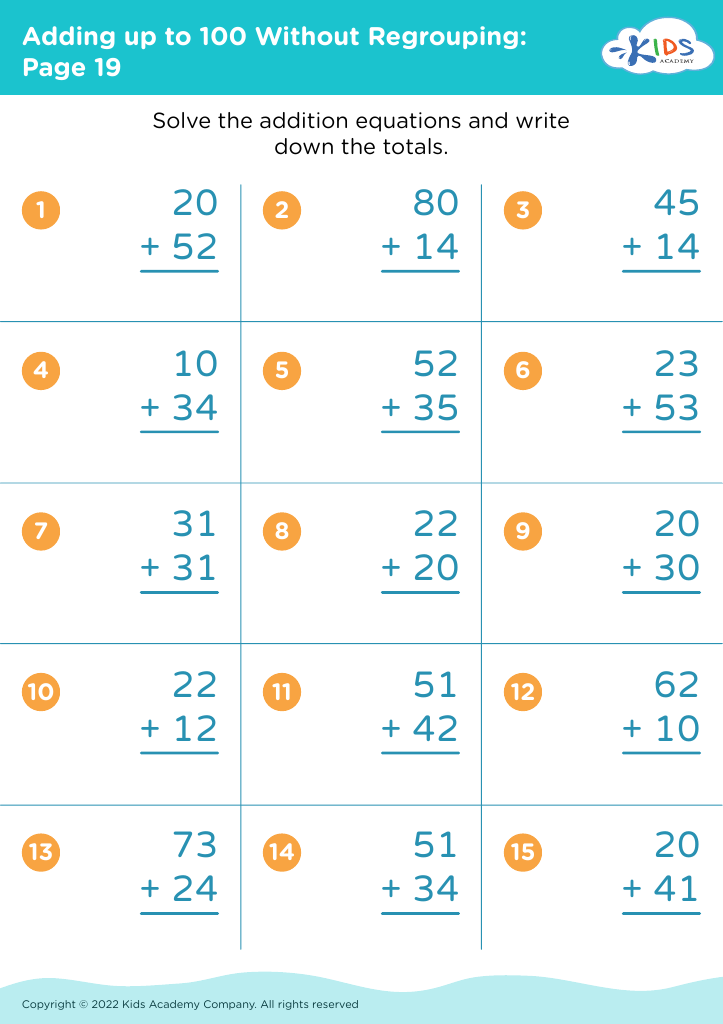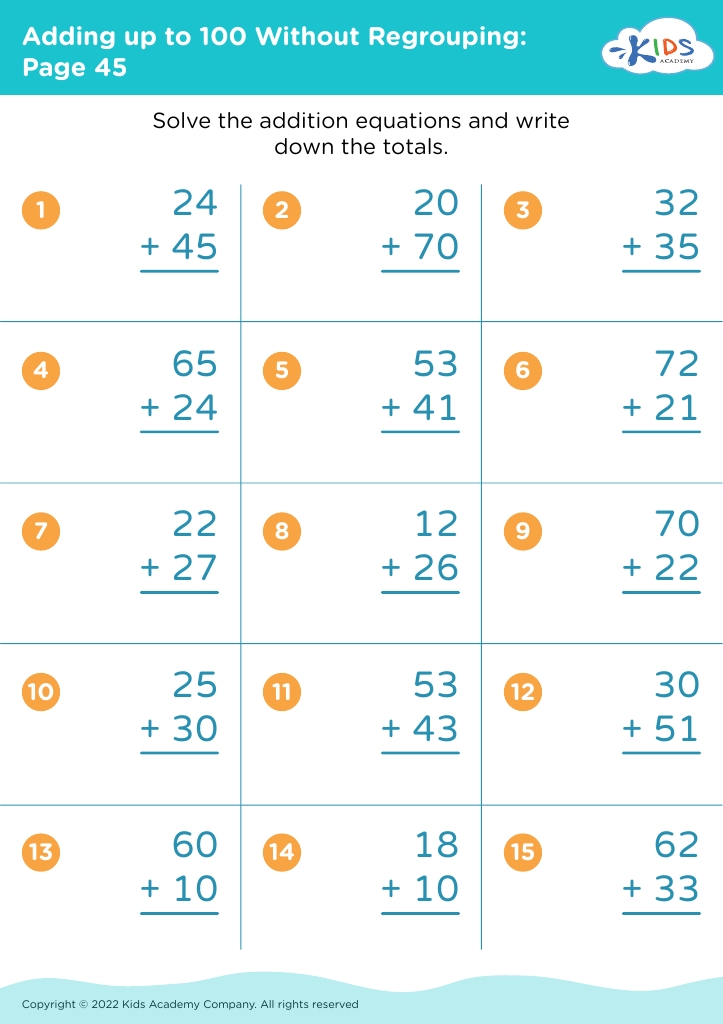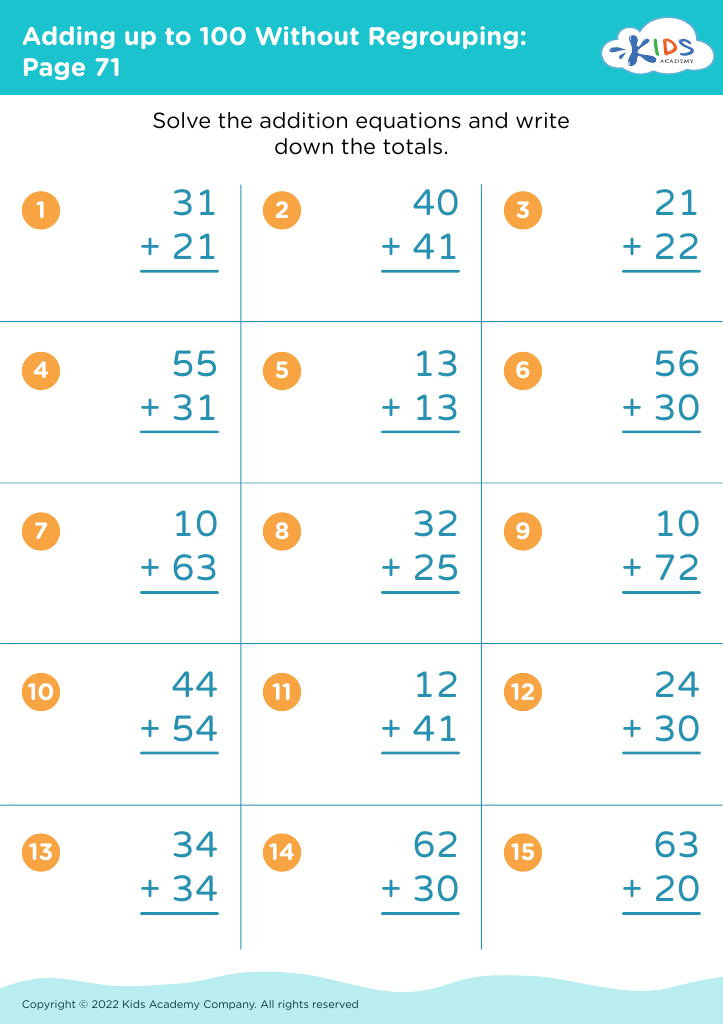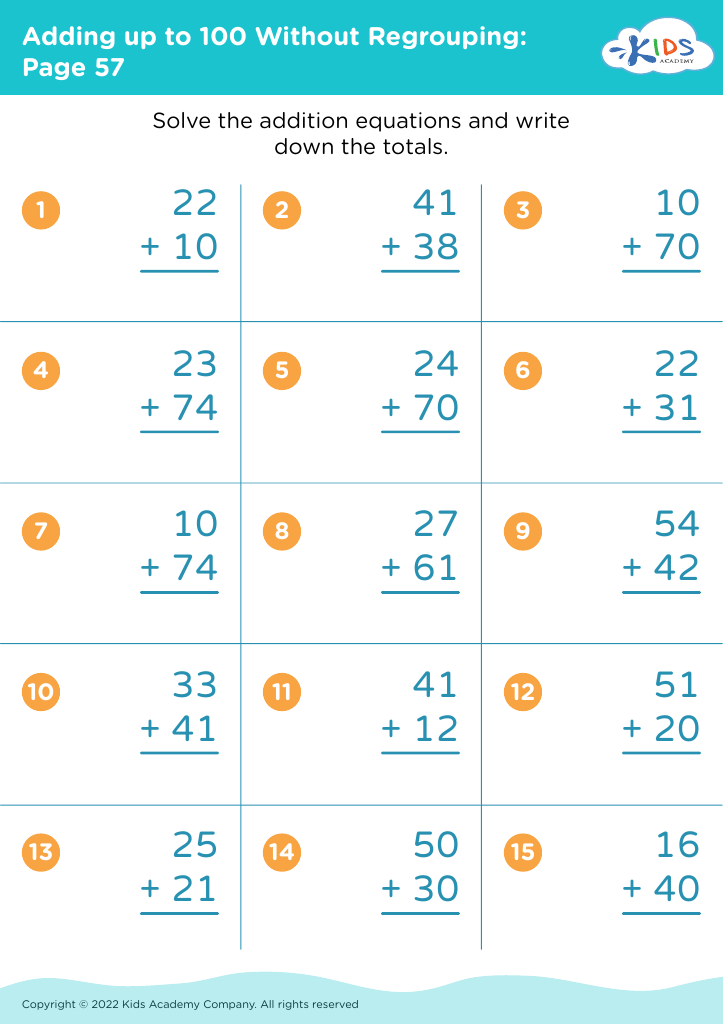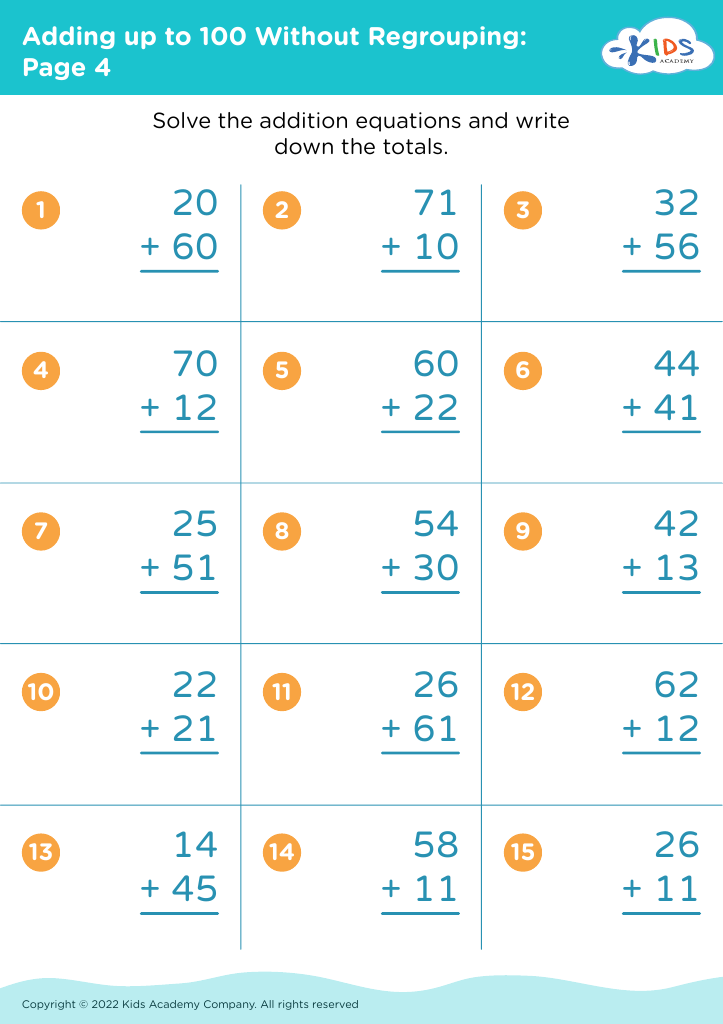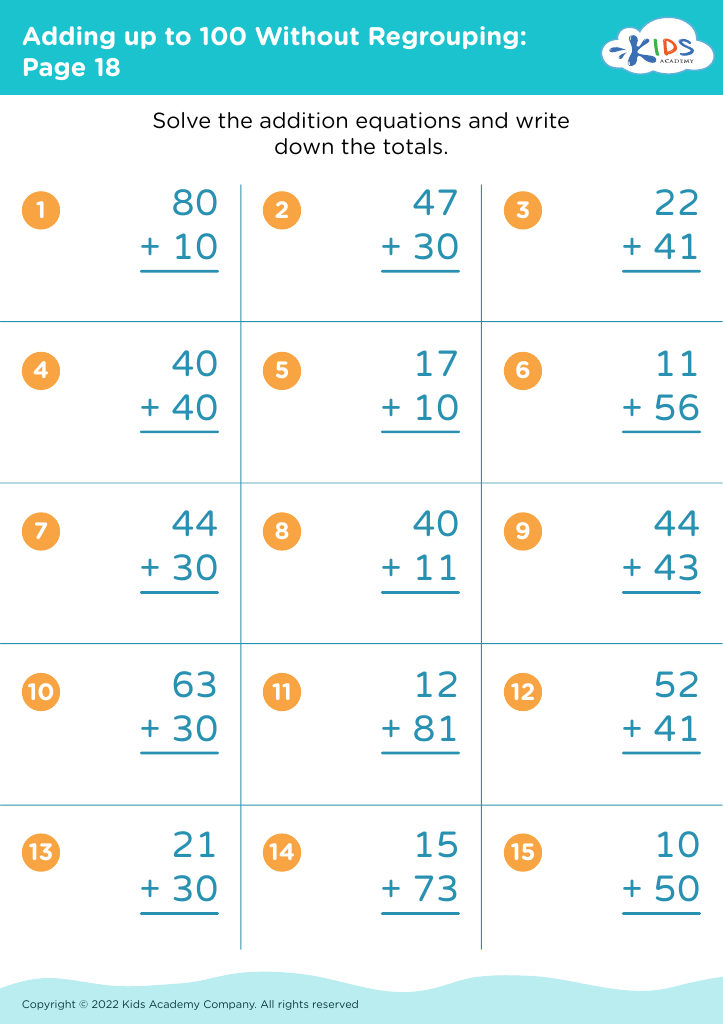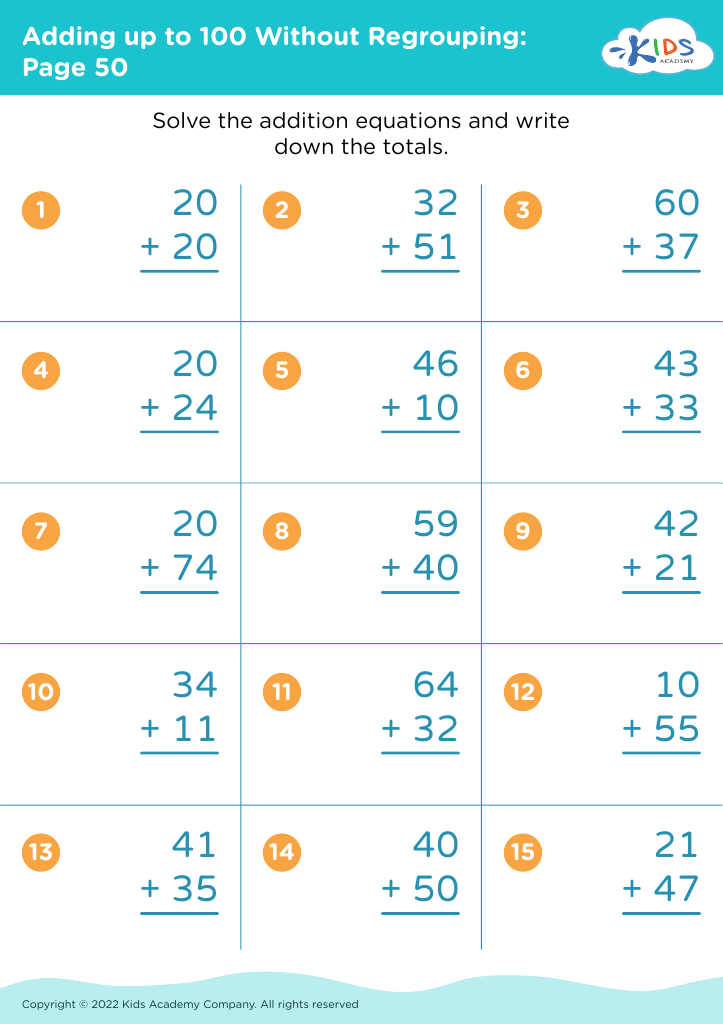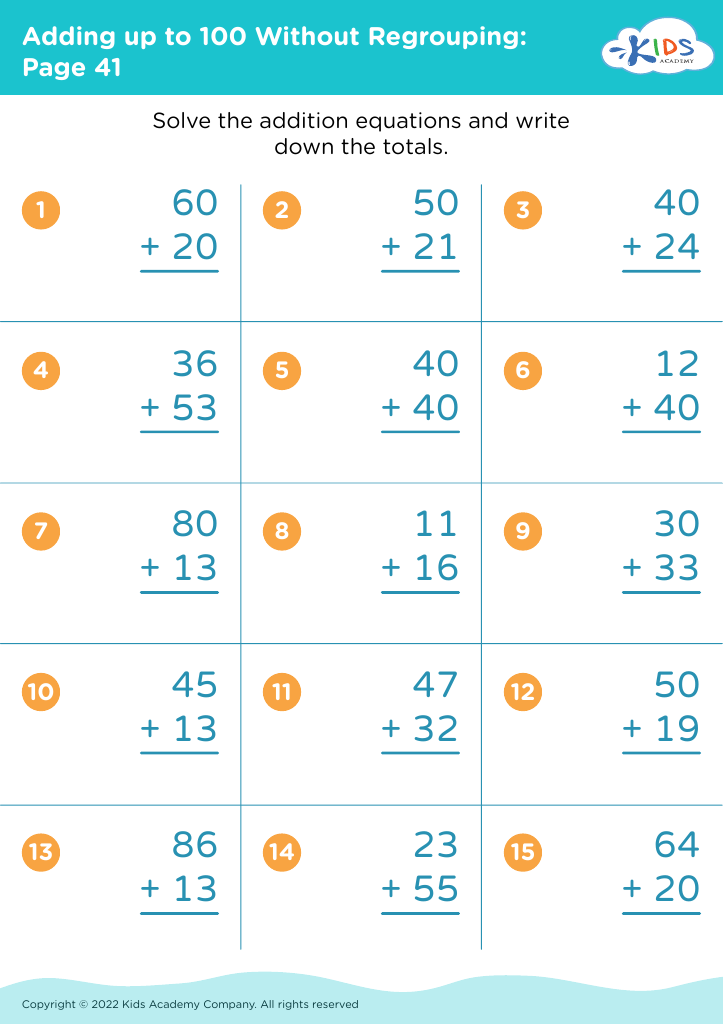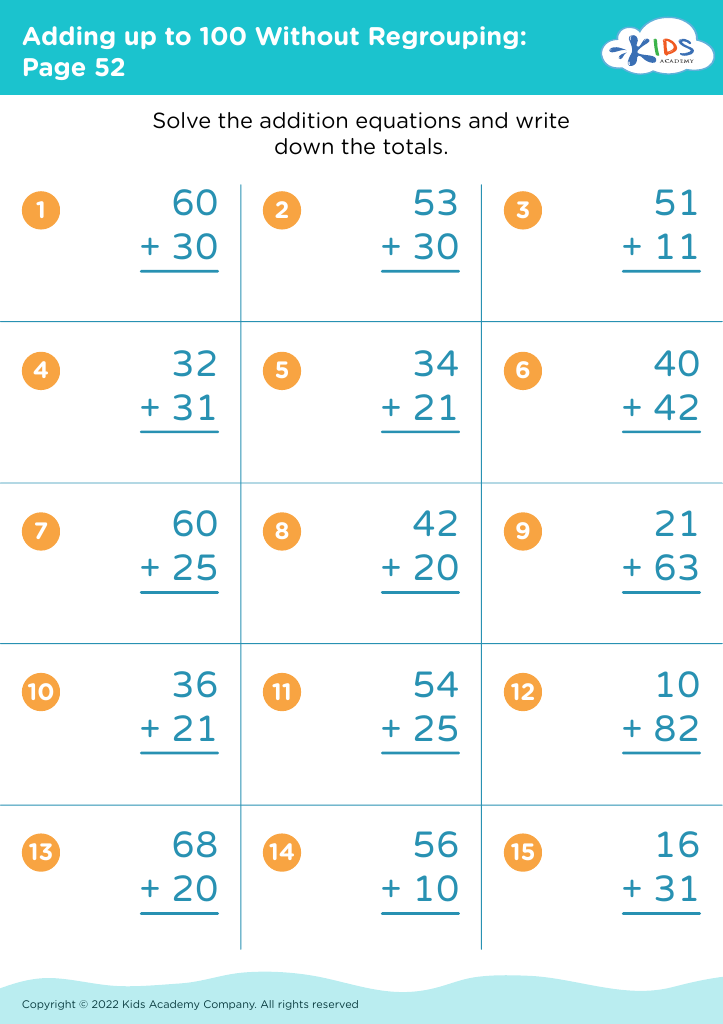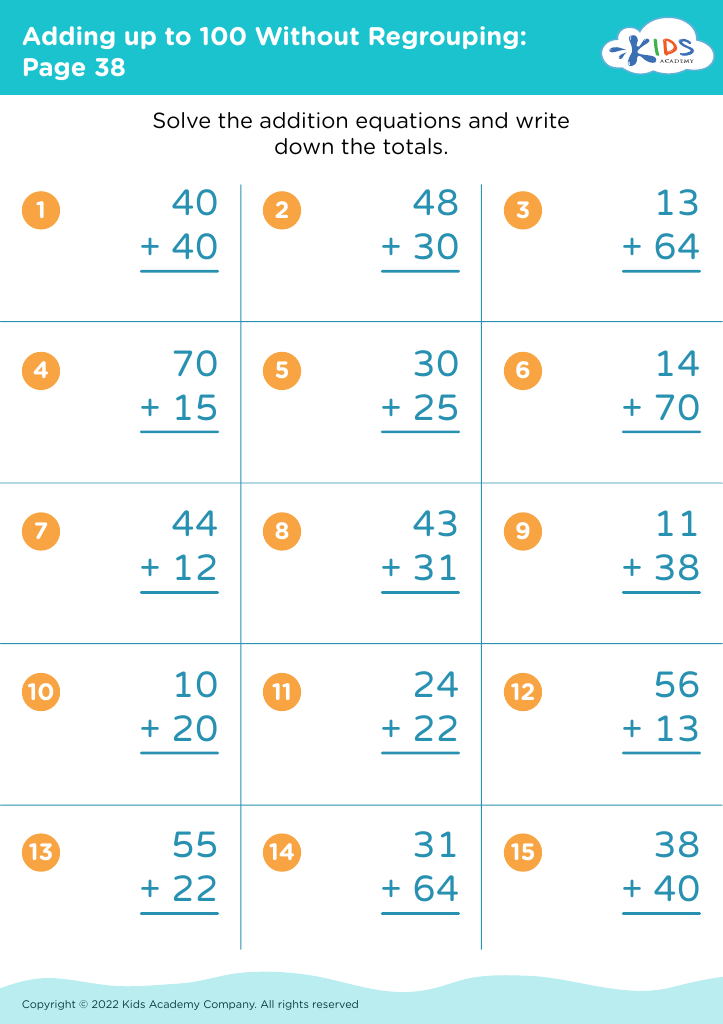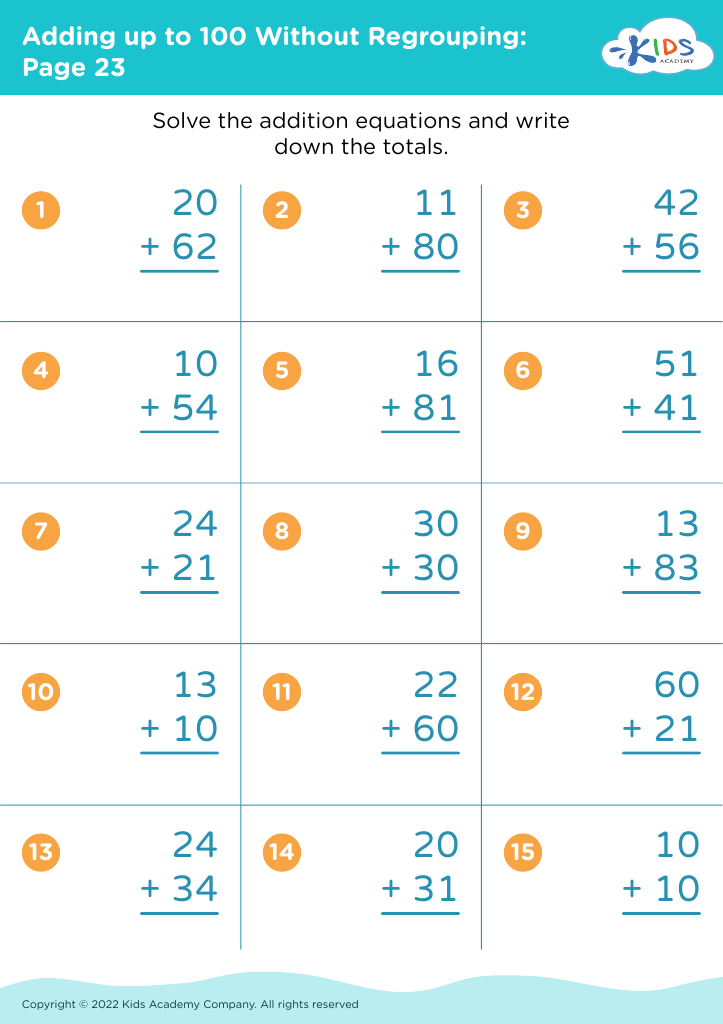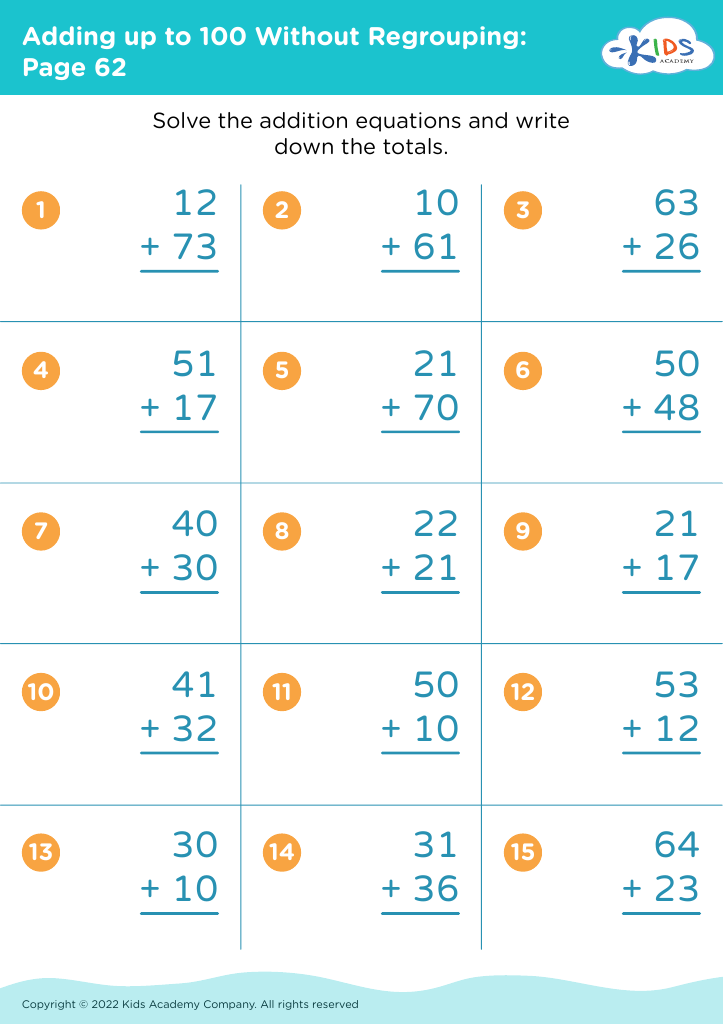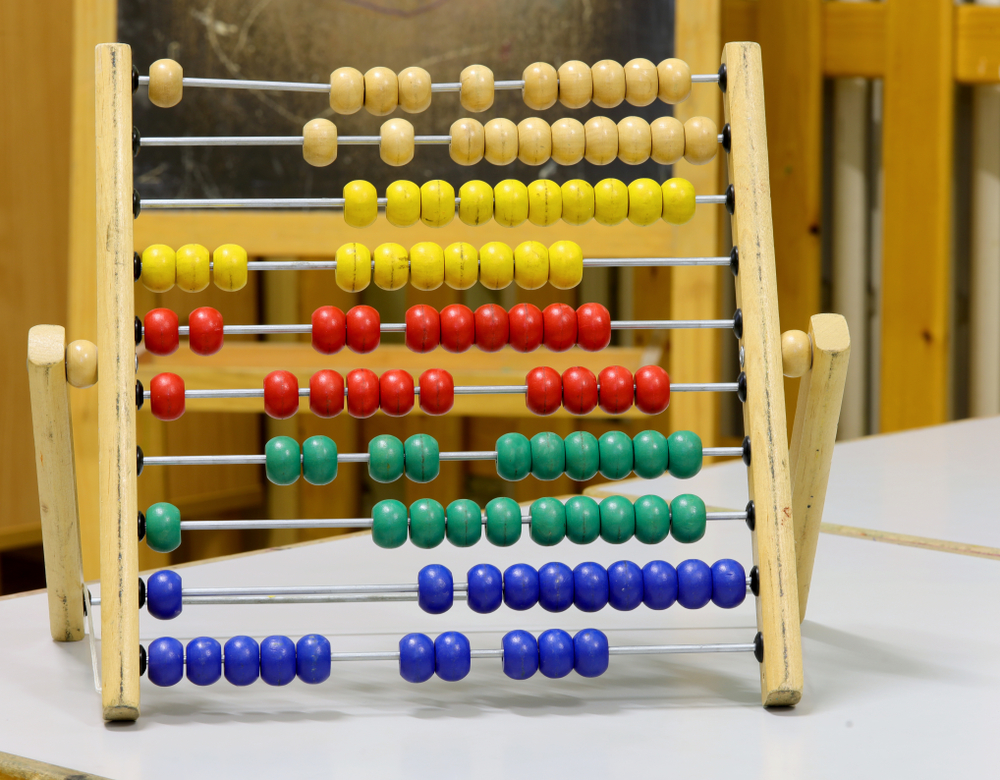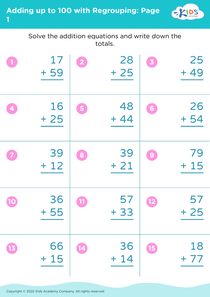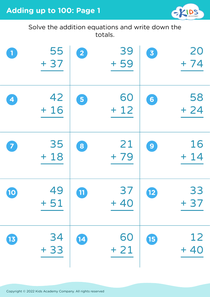Understanding fractions Adding up to 100 Without Regrouping Worksheets for Ages 8-9
19 filtered results
-
From - To
Enhance your child's mathematical skills with our "Understanding Fractions: Adding Up to 100 Without Regrouping" worksheets tailored for ages 8-9. These engaging and informative worksheets aim to simplify the concepts of fractions, allowing young learners to practice adding fractional values effortlessly. With a focus on visual aids and interactive exercises, your child will gain a solid grasp of how fractions work in addition. Perfect for home or classroom use, these worksheets foster effective learning while ensuring students build confidence in their math abilities. Start exploring the world of fractions today and set a strong foundation for future mathematical success!
Understanding fractions, particularly concepts like adding up to 100 without regrouping, is crucial for children aged 8-9 as they build foundational skills in mathematics. At this age, students begin to explore more complex aspects of numbers, and fractions are central to their mathematical development. Mastery of this topic not only enhances their number sense but also improves their ability to work with percentages, ratios, and measurements, which are essential in everyday life.
Parents and teachers should care about this concept because it fosters critical thinking and problem-solving skills. By learning to add fractions up to 100, students develop the ability to visualize parts of a whole, which is integral in various subjects, including science and economics. Practicing these skills also boosts confidence in math, setting a positive tone for future learning.
Moreover, contextualizing fractions in real-life scenarios, such as sharing food or dividing resources, helps make math relatable and engaging. As children practice this skill, they learn perseverance and gain confidence in tackling more complex mathematical problems in later grades. Ultimately, emphasis on understanding fractions ultimately leads to greater academic success and prepares children for more advanced math concepts in the future.

